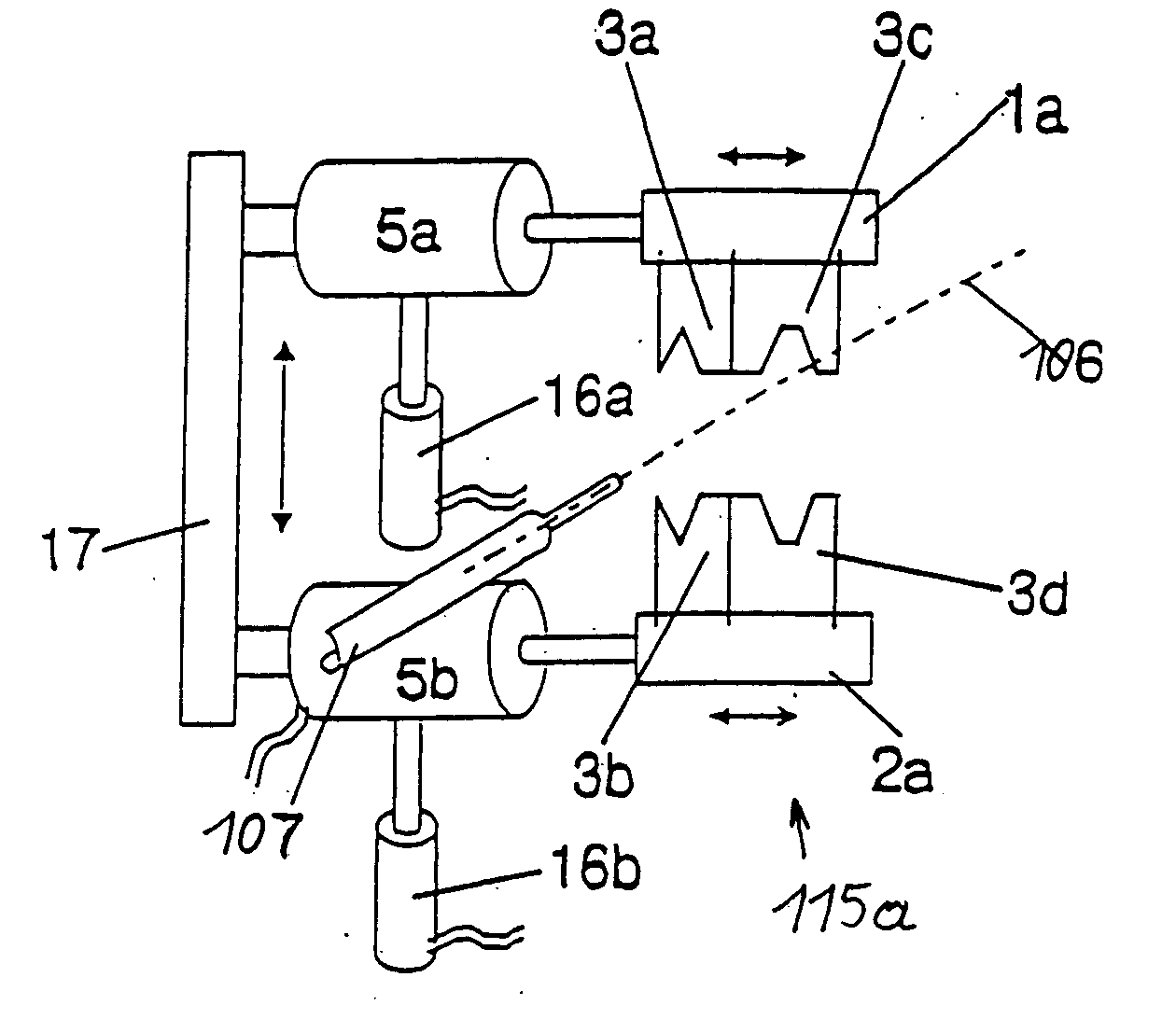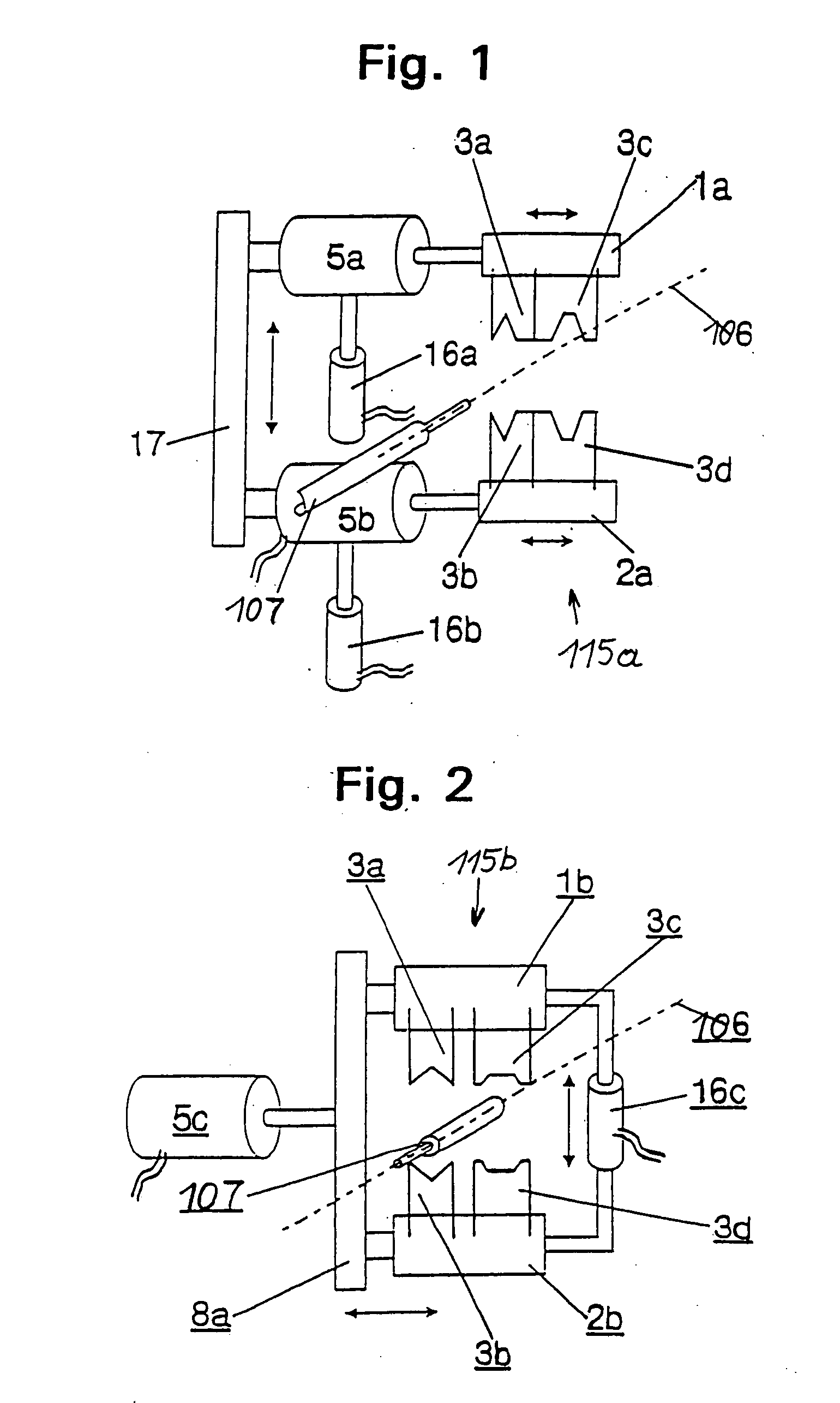Continuous cable processing apparatus
a processing apparatus and cable technology, applied in the direction of cable installation apparatus, electrical equipment, other manufacturing equipment/tools, etc., can solve the problems of inability to use processing stations, inability to provide short cable sections, and associated with additional costs, so as to reduce the processing time of individual steps
- Summary
- Abstract
- Description
- Claims
- Application Information
AI Technical Summary
Benefits of technology
Problems solved by technology
Method used
Image
Examples
Embodiment Construction
[0075]FIG. 1 shows a schematic oblique view of a novel apparatus according to the invention, having tool supports 1, 2 and knives 3 which are held thereon and a plurality of which (more than the 2 pairs shown) may be mounted side by side on larger tool supports 1, 2. Schematically shown drives 5a and 5b drive the tool supports laterally relative to the axis 106. Schematic closing drives 16a and 16b enable the tool holders 1, 2 to be closed together (via a control) or separately. A guide 17 keeps the tool supports or tool holders and the drives parallel.
[0076]FIG. 2 shows a variant thereof having upper and lower tool holders 1, 2 jointly guided via a closing drive 16c, for example by means of a spindle drive and a single lateral drive 5c. This simplified variant is compact but—in comparison with the first one—permits only a few operations.
[0077] Both above-mentioned Figures refer to an important aspect of the invention, namely the virtually completely free mobility of at least one ...
PUM
| Property | Measurement | Unit |
|---|---|---|
| Time | aaaaa | aaaaa |
| Length | aaaaa | aaaaa |
| Force | aaaaa | aaaaa |
Abstract
Description
Claims
Application Information
 Login to View More
Login to View More - R&D
- Intellectual Property
- Life Sciences
- Materials
- Tech Scout
- Unparalleled Data Quality
- Higher Quality Content
- 60% Fewer Hallucinations
Browse by: Latest US Patents, China's latest patents, Technical Efficacy Thesaurus, Application Domain, Technology Topic, Popular Technical Reports.
© 2025 PatSnap. All rights reserved.Legal|Privacy policy|Modern Slavery Act Transparency Statement|Sitemap|About US| Contact US: help@patsnap.com



